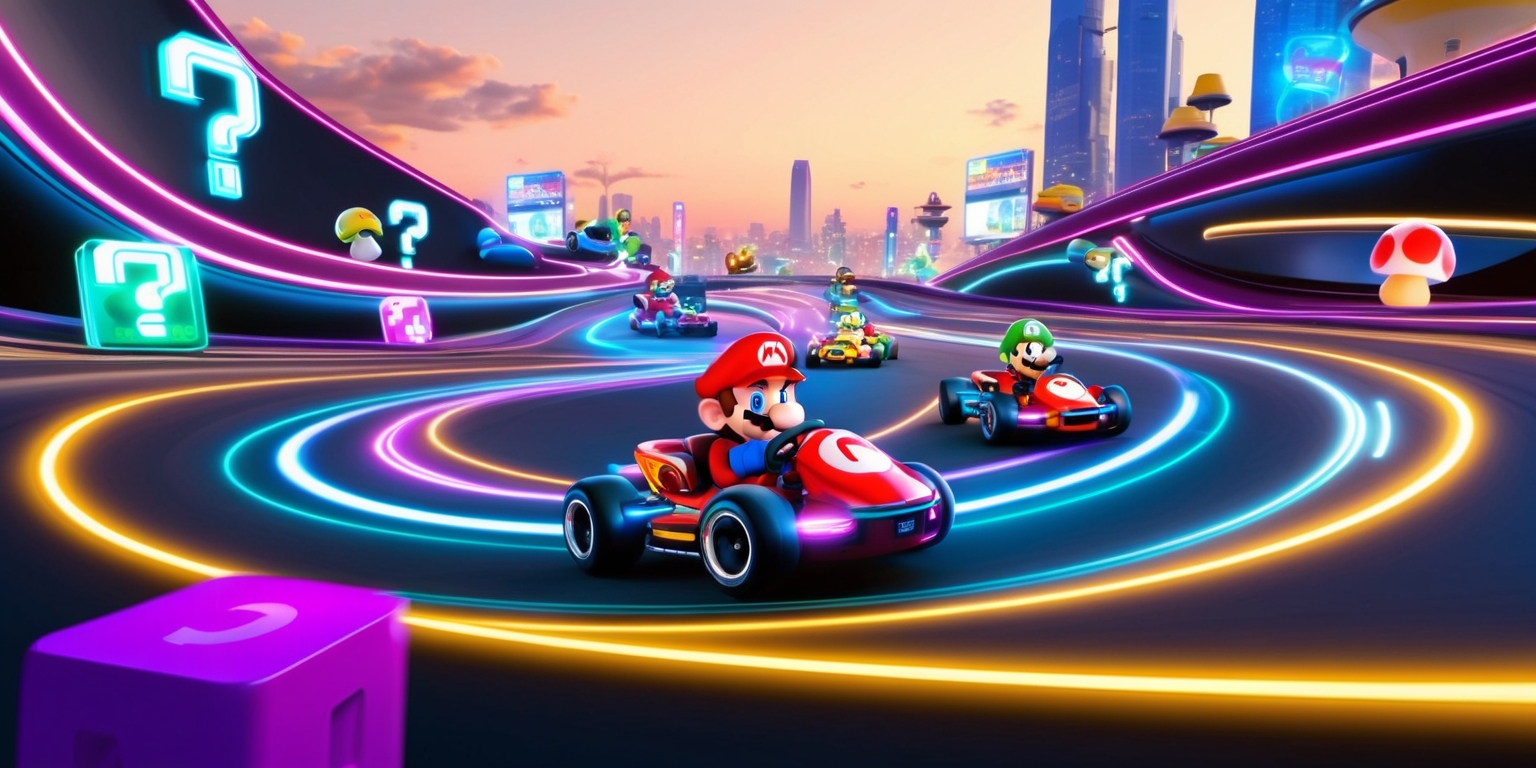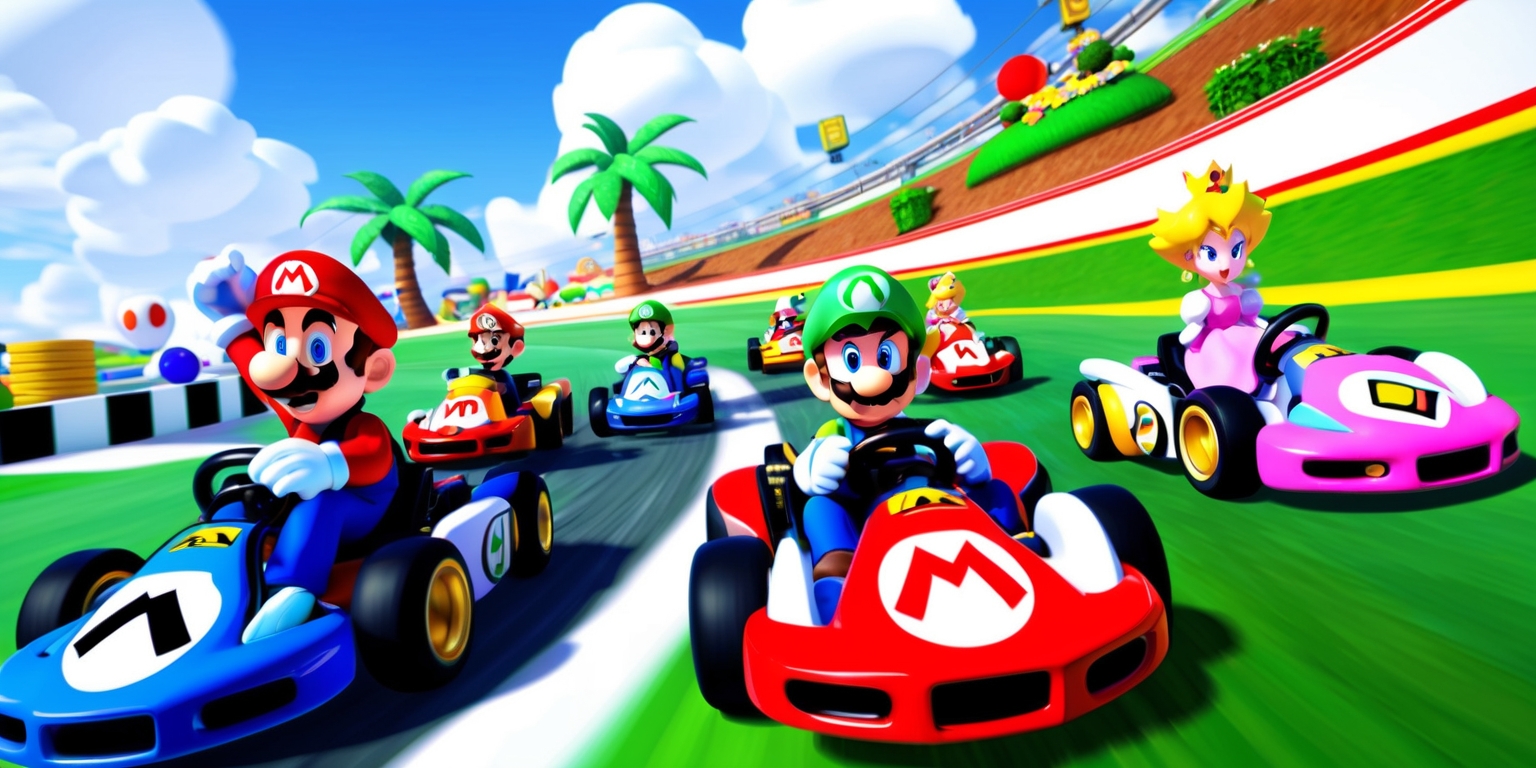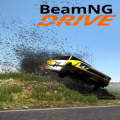Bridging Nostalgia and Innovation: A New Era in Mario Kart Racing

Mario Kart World has redefined racing with its inventive blend of classic excitement and modern open-world connectivity. The familiar sensation of speeding through beloved circuits now intertwines with expansive environments where tracks seamlessly converge. Traditional three-lap races, a hallmark of past titles, emerge as a special option that players can toggle back into the gameplay experience. Every twist and turn has evolved to accommodate both nostalgic enthusiasts and new-age gamers craving fresh challenges. This dynamic balance between timeless competition and innovative design shapes a landscape where every race promises surprises alongside heartfelt nods to its legacy.
Reinvented Racing Course Experiences
Mario Kart World introduces a racing format that defies conventional circuit limitations by intertwining individual courses within a vast open-world network. Rather than confining racers to a static three-lap loop, tracks now connect with one another through transitional pathways that create an evolving race scenario. Every course selection becomes a gateway to adjacent circuits, giving a sense of continuous adventure. Players find themselves not only competing on a single track but also navigating through a network of interlinked routes that require adaptability and a keen sense of direction. This setup channels a blend of strategy and fluid motion, where every turn could lead into an entirely different racing environment. The design pushes competitors to master both new transitions and classic racing nuances.
Classic Racing Format Mechanics

For gamers seeking a return to the classic gaming era three-lap thrill, Mario Kart World offers a precise method to recreate that familiar setting. In the VS Mode, when racing offline or against NPCs, enthusiasts can specifically configure the race to follow the traditional lap system. By selecting a course and then choosing it again from the subsequent list, gamers trigger the classic mode where the track is repeated for multiple laps. This configuration reinstates the familiar lap counter and the rhythmic cadence of racing around the same circuit three times. The method is straightforward yet innovative, cleverly integrating nostalgic gameplay within a modern, interconnected world. This blend of legacy mechanics with contemporary design offers an accessible pathway to traditional fun while preserving technological advancements.
Offline Racing with Familiar Modes
Offline gameplay in Mario Kart World embraces the essence of camaraderie and local competition. When engaging in couch co-op or wireless play, players can jump into a familiar VS Mode that supports traditional racing rules. This mode facilitates customization, letting players adjust settings such as item frequency, difficulty, and vehicle class to mirror the cherished three-lap races of previous gaming experiences. By selecting the same course twice during the setup, racers experience a replicative loop that feels both nostalgic and engaging. This feature supports a more controlled environment where one can enjoy the classic format without the unpredictability of interconnecting transitional tracks. The offline mode encourages personal skill development and warm competition, establishing it as the perfect option for those in search of straightforward competition.
Connecting Tracks for Continuous Raceway
The open-world structure of Mario Kart World is instrumental in delivering an experience where separate courses are not isolated entities but parts of a continuous raceway. When players choose a track from the map, they are automatically presented with a list of connected courses that lead into one another, forging a seamless adventure. This connectivity simulates a realistic progression where the break between laps is minimized, and transitions become an integral part of the challenge. However, for those who desire the intensity of distinct laps within one circuit, the game offers an alternative selection method to recreate the segmented race. This dual approach highlights the versatility of the game's design, catering to both modern preferences and traditional expectations within the racing genre.
Online Multiplayer Challenges and Options
In online multiplayer mode, Mario Kart World showcases its dynamic and unpredictable nature by involving up to 23 racers in a live challenge. The race setup in this mode presents a map filled with options, including a Random selection that effortlessly turns one of the courses into a standard three-lap race if chosen. This random element ensures that each race can vary significantly, adding a layer Featuring unexpected twists that demand players remain constantly vigilant. While the open-world progression is the norm in multiplayer, the random chance to experience a classic three-lap race integrates the beloved heritage of Mario Kart gameplay into the online arena. Such design choices accommodate a range of player desires, ensuring that both fans of continuous open-world racing and those fond of the traditional lap format find something exciting in every match.
Revisiting the Traditional Lap Count
For time-honored Mario Kart veterans, the revival of the traditional lap count in certain modes acts as a bridge connecting eras. When a three-lap race is activated, competitors are greeted by a familiar lap indicator such as Lap 1/3 prominently on the screen. This visual cue revitalizes the classic sense of progression and anticipation every time a lap concludes. The timed intervals and repeated segments encourage racers to learn the intricacies of each course, perfecting their strategy with every circuit loop. The design not only rekindles memories of past Mario Kart adventures but also deepens the gameplay experience by requiring consistency and precision. In this way, Mario Kart World manages to respect its legacy while providing modern fans with the opportunity to indulge in traditional lap racing.
Variant Lap Formats in Organized Championships
Contrasting the three-lap mode, Grand Prix races in Mario Kart World take a markedly different approach by incorporating transitional tracks. Instead of repeated laps on a single course, players begin on one track and then progress through interconnected courses, each contributing one discrete lap. This setup is reminiscent of multi-stage tournaments where progression is as significant as the race itself. The design means that no single lap is repeated in identical fashion, leading to a varied and evolving challenge that tests versatility. While the Grand Prix mode diverges from the older format, it underscores the game's commitment to innovation and revised competitive structures. Such variation adds to the repertoire of racing experiences available, catering to the diverse tastes of the racing community.
Nuances in Player Preferences and Community Discourse
Player discussions often reflect admiration for the delicate balance Mario Kart World achieves between progressive open-world racing and its roots in traditional circuit racing. The transitional laps have sparked extensive conversation, with many noting how they redefine the pacing of every race. Yet, a vocal segment of the community cherishes the option to revert to the original style of racing. This dual system — one that allows for both free exploration and a condensed, repeatable lap challenge — fuels passionate debates and diverse strategies. The conversations have led to an enhanced understanding of how game mechanics can honor legacy while pushing boundaries. Each update and adjustment seems Crafted to motivate players to explore a variety of options racing formats, fostering a community that values both history and innovation.
Customization and Rule Selection in VS Mode
At the heart of the customizable racing experience lies the VS Mode, where players have extensive control over the nuances of their track race. Here, participants can adjust crucial settings such as item distribution, vehicle speed thresholds, and overall difficulty levels. By choosing the same course twice from the map, one intentionally creates a race that adheres strictly to the three-lap tradition. The flexibility in rule selection empowers players to tailor their racing challenges according to personal preferences or to suit the competitive spirit of a local session. It demonstrates the developers’ commitment to Providing a multidimensional experience that meets a wide range of needs audiences. This carefully considered customization option ensures that whether one seeks a casual drive or a rigorous contest, there is always a mode that aligns perfectly with the player’s desired challenge.
Dynamic Interface and In-Race Visuals
The in-game interface in Mario Kart World has been meticulously overhauled to accommodate both the innovative open-world racing system and the retro-inspired three-lap races. When a traditional race is initiated, the on-screen display transforms to highlight critical information, such as the lap counter, current position, and track layout details. This interface design not only reinforces the nostalgic appeal of classic races but also integrates smoothly with the broader functionality of the game. The visuals remain clear and engaging regardless of the mode, providing essential cues that aid racers in strategizing their moves mid-course. The display’s adaptive nature reflects a well-thought-out design philosophy that considers both user experience and the need for real-time information in fast-paced racing. This balance between aesthetics and functionality enhances overall immersion during each contest.
Exploring Future Possibilities Within the Game's Evolution
The reintroduction of the three-lap race format within an otherwise evolving racing paradigm hints at potential future enhancements in Mario Kart World. Although current modes such as Grand Prix have shifted away from the traditional format, the option in VS mode and specific online races suggests developers remain attuned to fan nostalgia. This strategic inclusion of classic elements within modern contexts invites speculation about further options down the road. Could additional customizable rules or entirely new race formats emerge that bridge the gap between legacy and innovation? Even without official confirmation, the intellectual discourse among the community fosters an environment ripe for inventive updates. Such possibilities demonstrate that the development team is attentive to player feedback and continually exploring ways to merge storytelling with unique gameplay mechanics.







